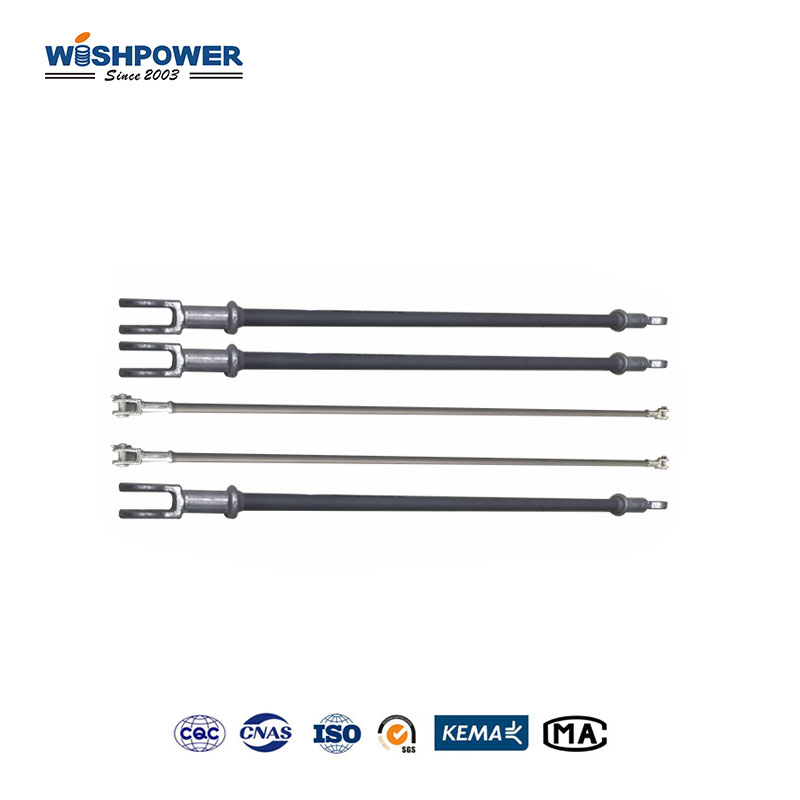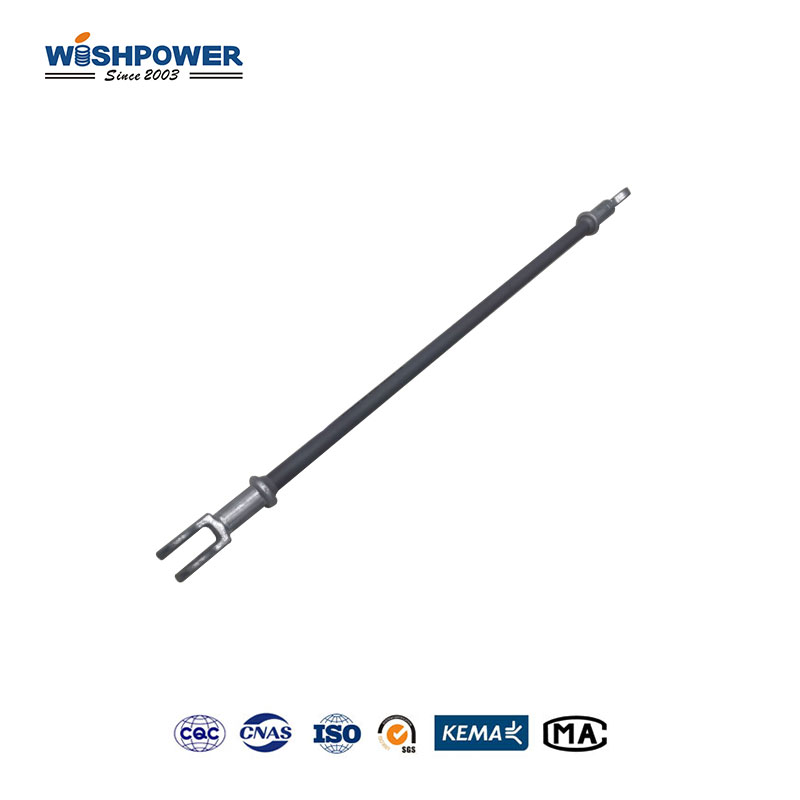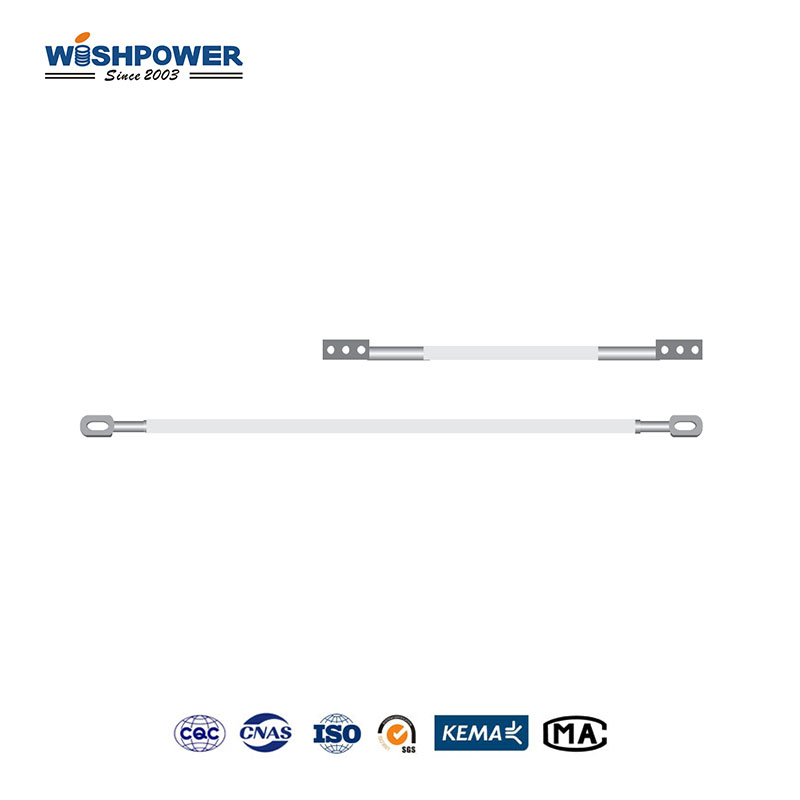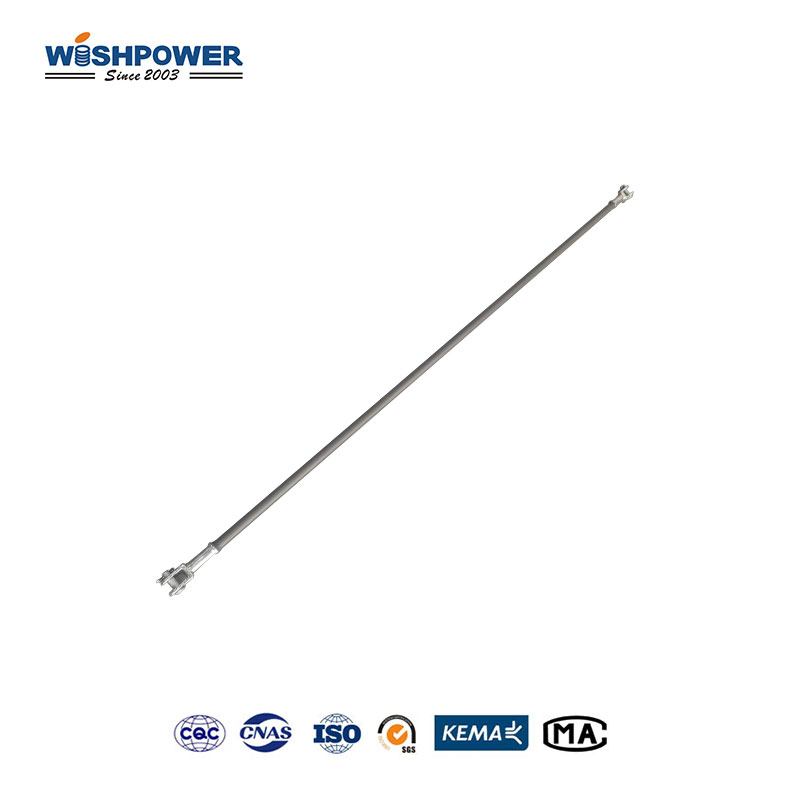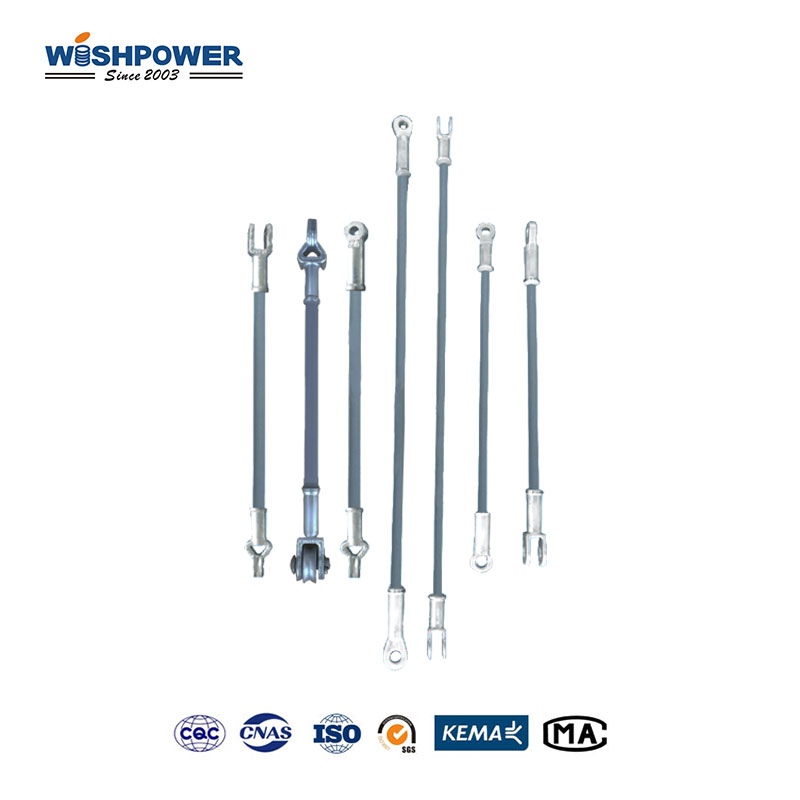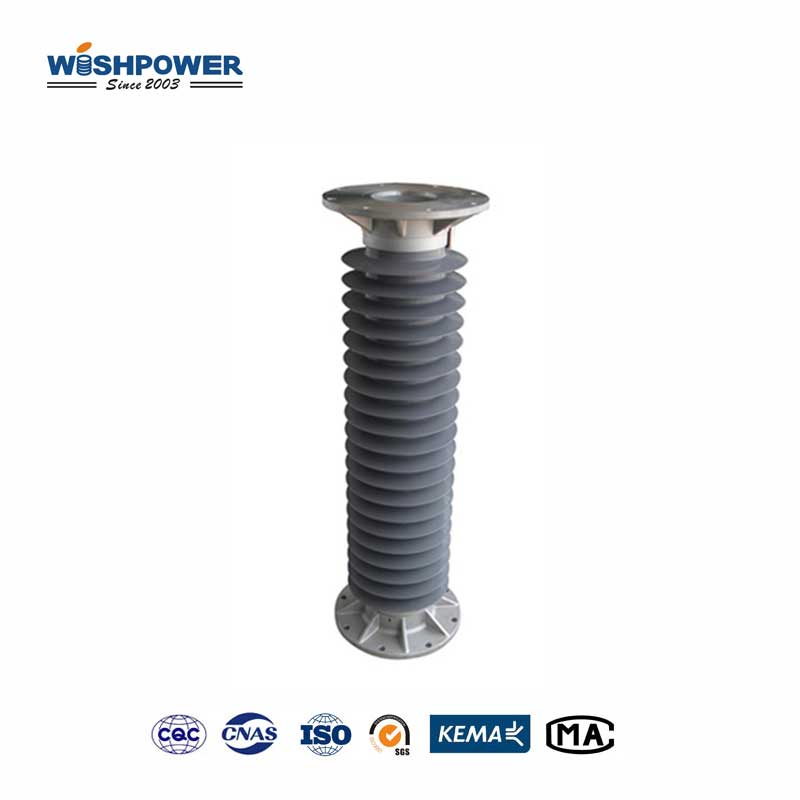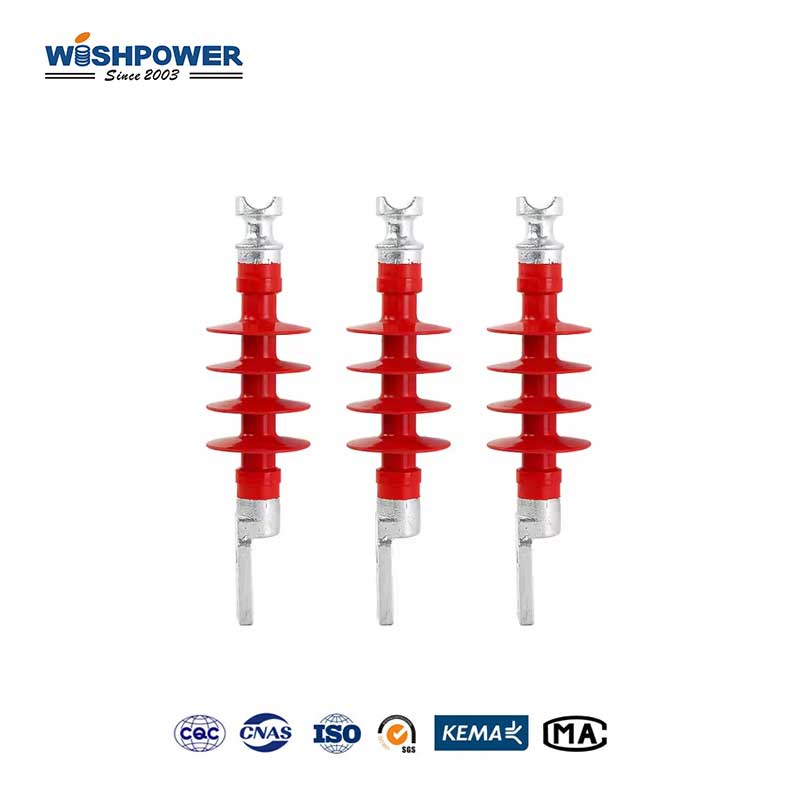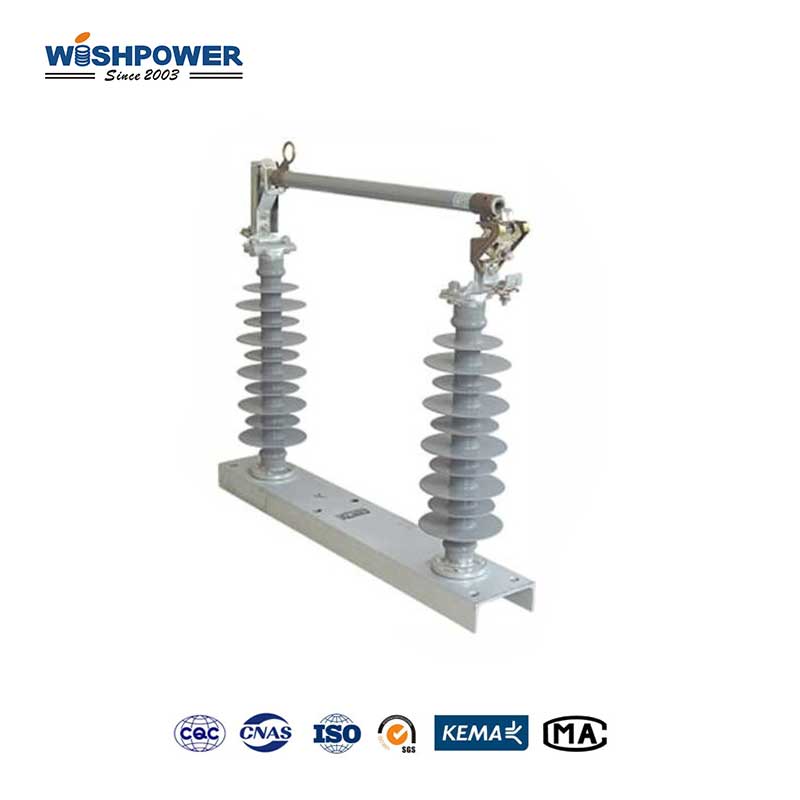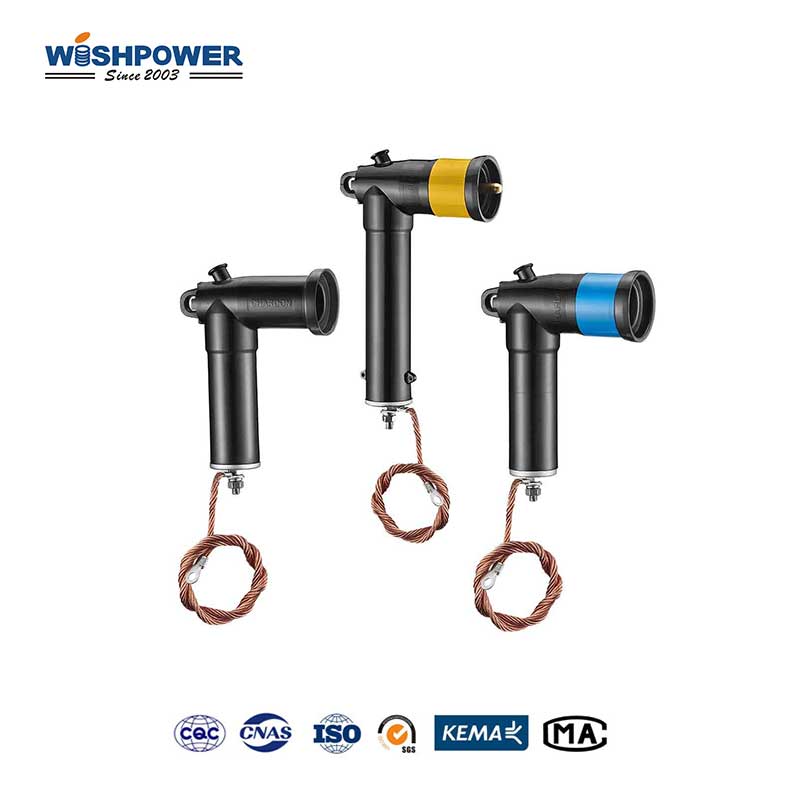Specification
| Product Type |
HJ-1.5M |
HJ-1.5C |
| Specified Voltage |
1.5 kV |
1.5 kV |
| Specified Mechanical Tensile Failing Load |
120 kN |
120 kN |
| Specified Mechanical Bencing Load |
/ |
/ |
| Section Length |
670 mm |
760 mm |
| Min. Insulation Distance |
405 mm |
350 mm |
| Min. nominal Creepage Distance |
405 mm |
350 mm |
| Lightning lmpulse Withstand Voltage(Peak Value) |
125 kV |
125 kV |
| Power Frequency Withstand Voltage Test- Wet |
30 kV |
30 kV |
The table above is just one of our product parameters. If you want more information, please get in touch with info@wishpower.net or download the file below.
What is the Composite Insulator Rod?
Composite Insulator Rod is a structural component utilized in high-voltage electric power transmission and distribution lines and is normally manufactured from superior materials such as silicon rubber and PTFE. These are selected because of their proper insulation characteristics, flexibility, and resistance to environmental factors. Silicon rubber rods offer excellent hydrophobic properties, preventing water from building up conductive channels on the surface, thus making the occurrence of electrical breakdowns in moist or heavily contaminated conditions low. It also helps the rod to have a long life and high performance, as it does not accumulate such substances as dust, salt, or industrial flumes, which makes it suitable for various extremely severe conditions and climate changes. Due to excellent chemical incombustibility, low friction coefficient, and high heat resistance, PTFE rods are most suitable in chemical and hot mediums. Other features of PTFE include; that it is chemically inert and does not stick to surfaces hence making it useful in preventing surface contamination and also it has a long span of service.
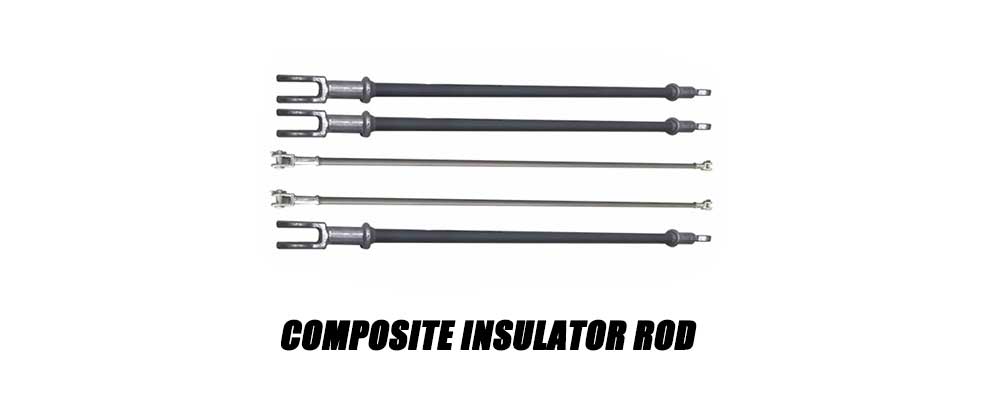
Composite Insulator Rod VS Composite Insulator
The insulator rod is a major part of a composite insulator that is mainly used to offer mechanical support as well as the desired electrical insulation for high-voltage transmission lines. Manufactured from materials such as silicon rubber or PTFE with a glass fiber reinforcement that is molded and constructed to endure mechanical loading as well as mechanical stress. Silicon rubber rods are more hydrophobic minimizing the prospects of an electrical flashover while PTFE rods boast of high chemical and temperature suitability.
The Insulator is a full device that is available in the higher voltage systems to carry the conductors for lifting and avoiding any current flow to the grounded structures. It includes a composite insulator rod, a protective housing (often made of silicon rubber or polymer), and metal end fittings for connections. Insulators serve both as electrical insulators and mechanical supports, protecting against environmental factors like UV radiation, pollution, and weathering. Various types of insulators, such as suspension, post, and pin types, are designed to meet different application needs in the electrical grid, and they often require periodic inspection and maintenance.
Benefits
- High Electrical Insulation:
Composite long rod insulators provide excellent electrical insulation, preventing leakage currents and reducing the risk of flashovers, especially in high-voltage applications.
- Superior Mechanical Strength:
With reinforcement from glass fibers, these rods have high tensile strength and flexibility, allowing them to withstand heavy mechanical loads and stresses without breaking.
- Weather and UV Resistance:
They resist UV radiation, extreme weather conditions, and environmental aging, ensuring long-term reliability in outdoor applications.
- Hydrophobic Properties:
Silicon rubber rods have strong water-repellent characteristics, reducing contamination buildup and maintaining insulation performance even in polluted or wet environments.
- Chemical and Temperature Resistance:
PTFE rods provide excellent resistance to chemicals, extreme temperatures, and corrosion, making them ideal for harsh and industrial environments.
- Lightweight and Easy to Handle:
These rods are lighter than traditional porcelain or glass materials, making transporting, handling, and installing them easier and more cost-effective.
- Low Maintenance Requirements:
Due to their self-cleaning and non-stick properties, they reduce the need for frequent cleaning and maintenance, lowering operational costs.
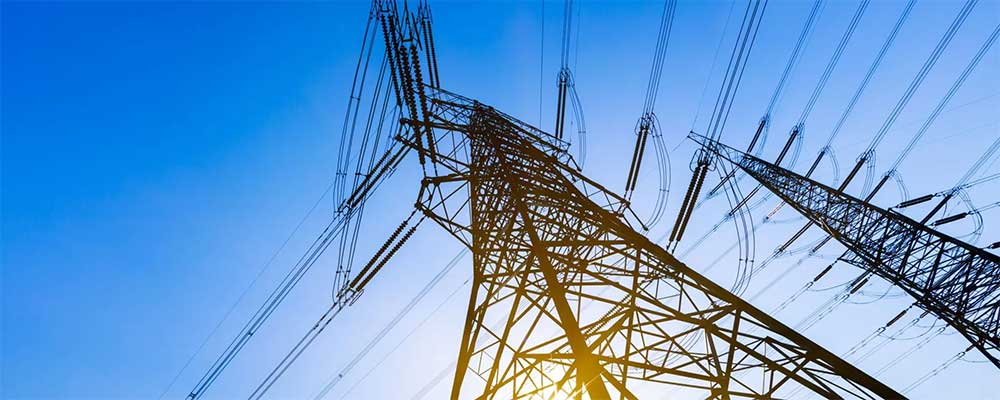
Application
- High-Voltage Transmission Lines:
The long rod insulator is commonly used in high-voltage transmission lines to provide mechanical support and electrical insulation. They help keep conductors separated from grounded structures and prevent leakage currents, ensuring efficient power transmission over long distances.
- Distribution Networks:
In medium-voltage distribution networks, these rods are used in post and pin-type insulators to support power lines on poles and towers. They offer lightweight, durable, and reliable insulation solutions that can withstand various environmental conditions.
- Railway Electrification Systems:
It is applied in railway electrification to support overhead contact lines, providing stability and insulation. Their resistance to mechanical shocks, vibration, and environmental factors makes them ideal for such dynamic applications.
- Substations and Switchgear:
In electrical substations and switchgear, it is used as a support insulator to maintain safety clearances and ensure the proper functioning of electrical equipment. Their compact and strong design allows for efficient use in confined spaces.
- Polluted and Coastal Areas:
Due to their hydrophobic and anti-corrosive properties, it is ideal for use in heavily polluted industrial areas and coastal regions with high salt fog. They help maintain reliable insulation performance under challenging environmental conditions.
Exhibition

Certificate

Factory

Hot Tags: Composite Insulator Rod, Composite Insulator, China, manufacturers, ISO factory, wholesale, KEMA, high quantity, best, price, low to high voltage














